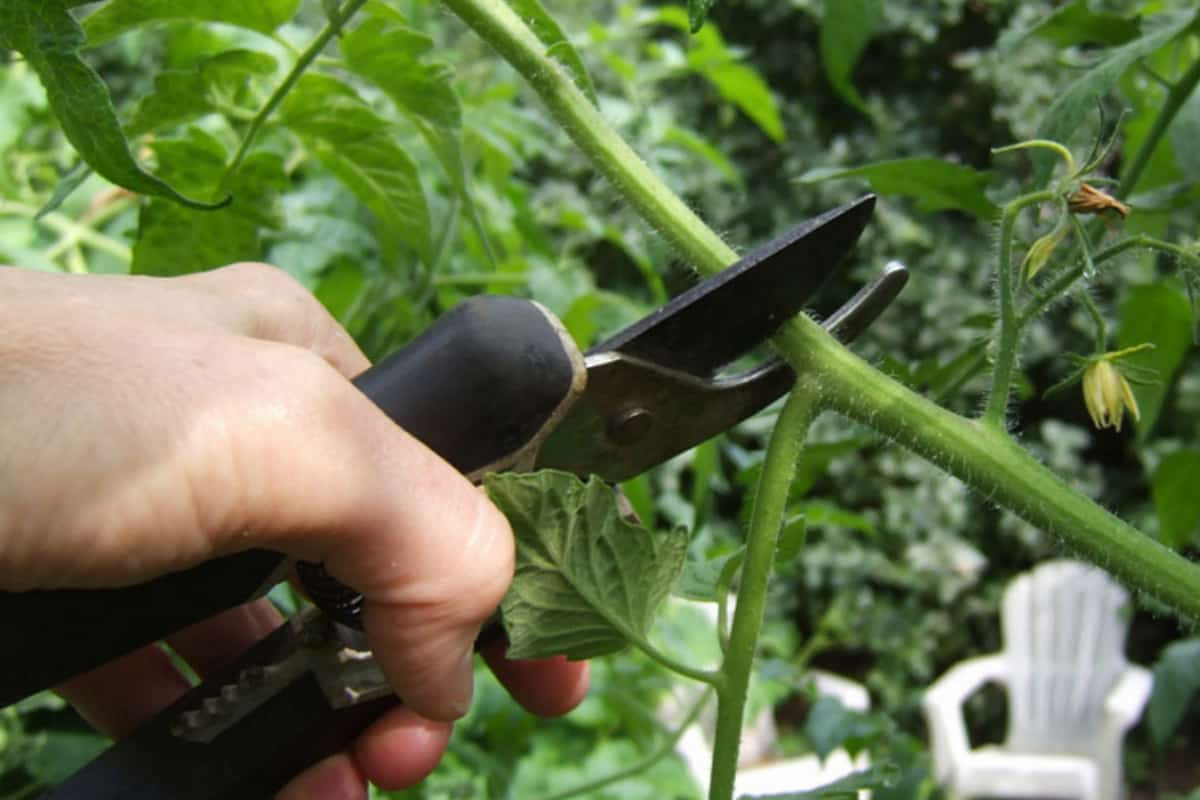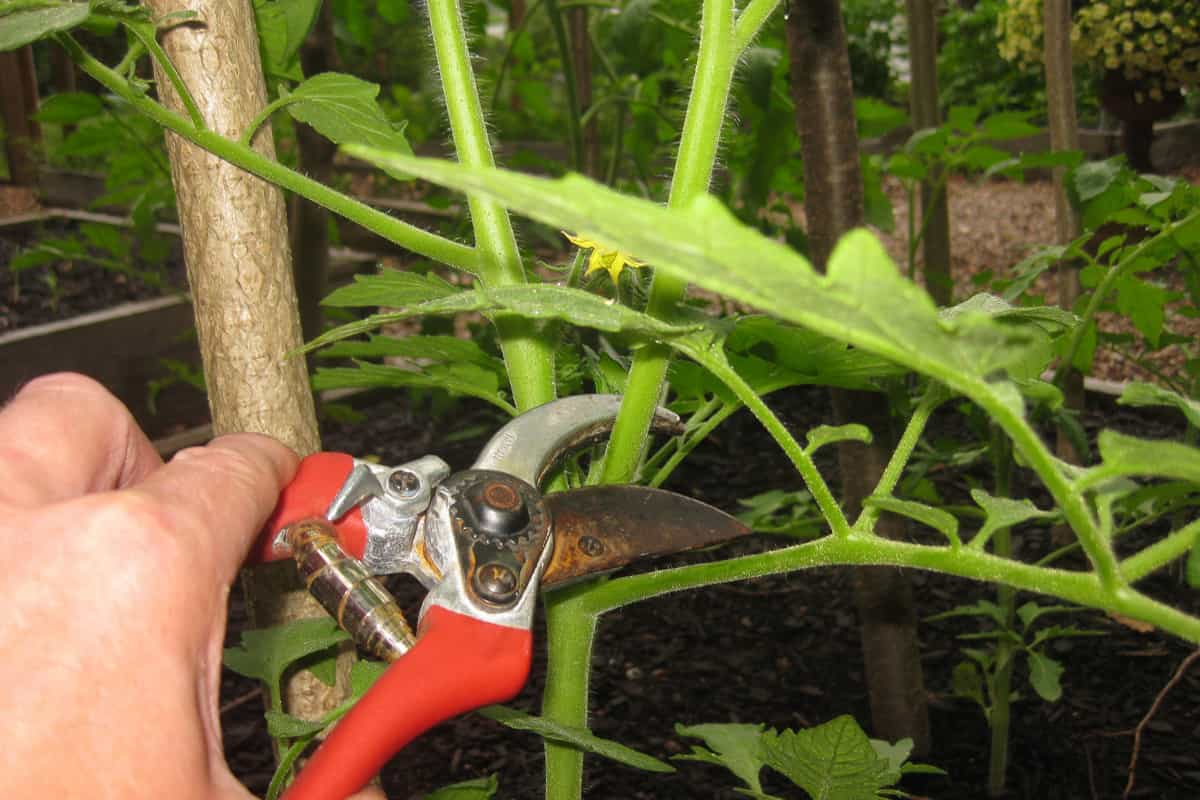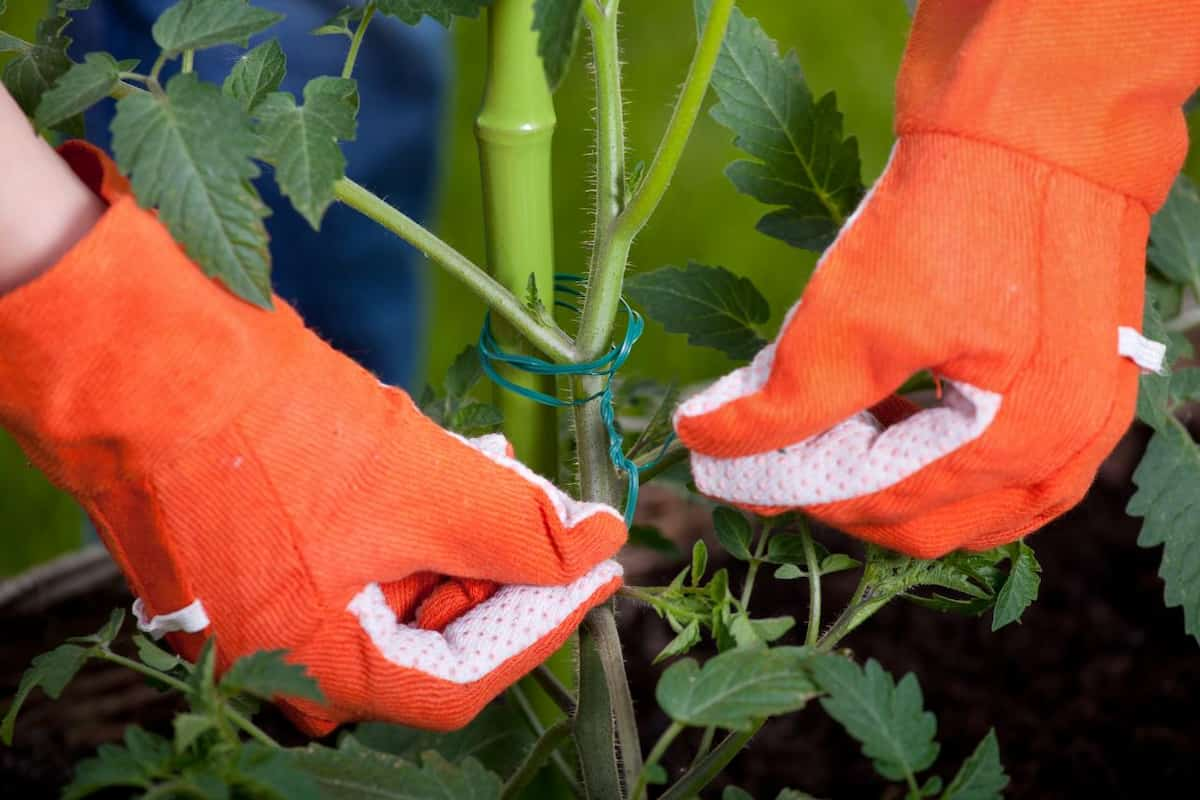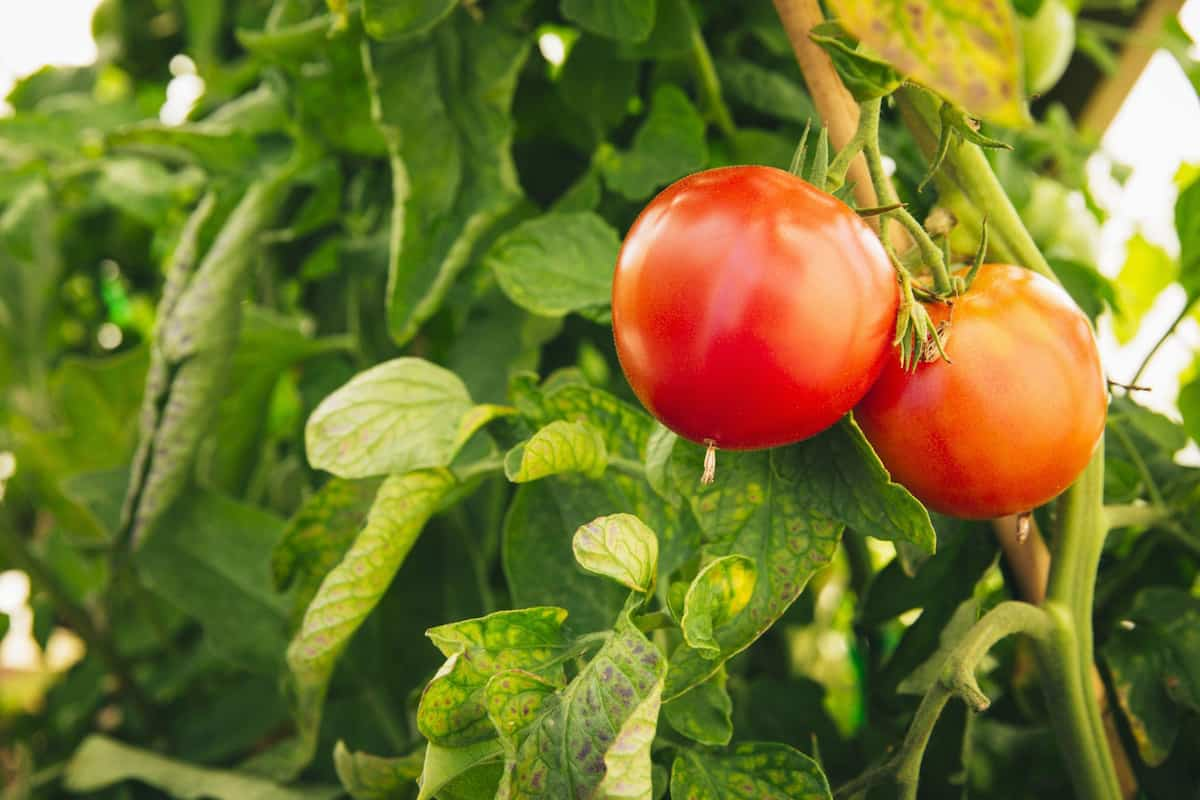As a person involved in farming food crops such as various tomato plant types like beefsteak, it is so important to learn the pruning process. Few garden plants can match the flavor of tomatoes (Lycopersicon esculentum) that have been grown in the garden, and the beefsteak variety of tomato plant is one of the few that can produce enormous fruits, some of which weigh one pound or more. The bright red, extra-fleshiness of these tomatoes comes from the fact that they are grown on large, indeterminate plants that continue to grow taller throughout the growing season. It is important to prune the plants at the appropriate time and using the appropriate method in order to help keep the plants under control and to ensure that each plant produces the greatest possible crop of tomatoes. Trimming at Planting It is best to wait until nighttime temperatures remain above 45 degrees Fahrenheit before transplanting beefsteak tomato plants into the garden, regardless of whether you started the plants from seeds or purchased seedlings. First, harden off your plants by gradually increasing the amount of time they spend exposed to the elements outside over the course of a week or two, and then plant each one in an area that gets direct sunlight.

When planting tomatoes, make sure to dig a hole that is sufficiently deep so that the lower two or three inches of the stem can be buried. Tomatoes develop roots from their buried stems, which results in a more robust plant. Before you plant each seedling, remove any lower leaves from this part of the stem using sharp shears. This will encourage root growth and prevent the lower leaves from rotting. In order to stop the spread of plant diseases, you should disinfect your shears between each cut by wiping them down with rubbing alcohol. The Forming of the Plant As your beefsteak seedlings continue to develop, you should perform light pruning on the plants to encourage the growth of one or two robust central stems and remove any side suckers as they develop. These are the slender shoots that emerge at the axils of the leaves, which are the points on the stem where the leaves first emerge. Employing pruning shears, remove all of the plant's stems except for one or two that are strong and upright. Then, using your fingertips, pinch off suckers as soon as they appear. If you fail to remove suckers when they are still small and they grow, you can use shears that are sharp and pointed to cut them off at their points of origin. Just be careful not to damage the main stem.

The removal of suckers directs more of the plant's energy toward the production of tomatoes; however, you will still need to provide the plant with support as it continues to grow after it has been pruned. Either use soft ties to secure the stem to a strong stake that has been driven into the ground, or use strings that are suspended from a horizontal wire that is supported by stakes. Other Forms of Pruning It is possible for a beefsteak tomato plant to develop a fungal disorder that is common to tomatoes called leaf spot on its lower branches as the plant continues to mature. This fungus is responsible for the dark spots, which are then followed by a yellowing of the leaves, which ultimately dries up and dies. Even though a plant infected with leaf spot only rarely dies as a result of the condition, it is still a good idea to remove affected leaves as soon as possible and dispose of them away from the plant. Before you begin this or any other type of pruning, make sure your pruners are clean.

Between each cut, disinfect your shears by dipping them in a bleach solution that has been prepared by adding two capfuls of bleach to one gallon of water. You could also assist the plant to resist fungal infection by pruning away some foliage at its center to achieve better air circulation. However, make sure that you only remove a few leaves here and there so that you don't significantly slow down the plant's ability to produce energy. Pruning in Late Summer The beefsteak variety of tomato is grown as an annual in every region of the United States, just like every other type of tomato. It is unlikely that tomatoes on the youngest, upper part of the plant will ripen before the plant dies off, so prune its central stems near the end of summer to a point just in front of partially formed, green fruits. This should be done because it is unlikely that tomatoes on the oldest, lower part of the plant will ripen before the plant dies off. This helps direct the plant's remaining energy into the production of these last fruits of the season, which typically reach their full size and maturity before the onset of cold weather. Because the beefsteak variety is an indeterminate type, it has the potential to grow extremely tall as the season progresses. As it does so, it frequently becomes challenging to support its height as it increases. Pruning the plant late in the season not only helps to keep its size under control but also makes it easier to keep it supported.

Tomato plants require regular pruning in order to increase both the number of tomatoes produced and their size. When properly cared for, tomato plants can grow very quickly. The practice of pinching off branches and leaves during the growing season is beneficial to both determinate and indeterminate varieties of the plant. Indeterminate tomato varieties produce a lower total yield of fruit over a longer period of time than determinate tomato varieties, which produce all of their fruit during a shorter period of time. Start the process of pruning at the beginning of the season, continue to pinch off growth while the plant is producing fruit, and finish up with additional pinching in the fall to increase the amount of ripe fruit that can be harvested. Before the tomato plant has reached its full size, remove any and all blossoms that have formed on it. This will prevent the tomato plant from producing fruit and instead direct its energy into developing sturdy branches that can support fruit production. Pinch off any sucker branches that have formed below the first stem of flower clusters in the branch joints. Suckers mark the beginning of new branch growth and must be removed in order to prevent the plant from becoming overly branched and producing insufficient amounts of fruit.
